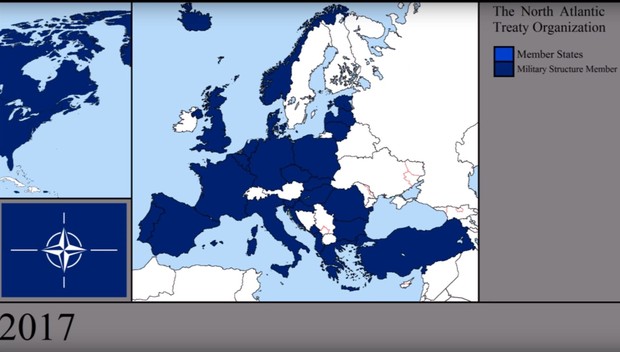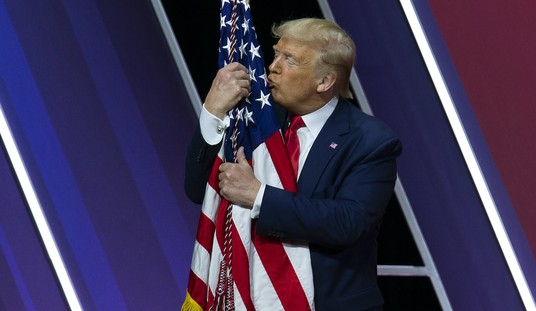
CAPTION CORRECTS CAPTION INFORMATION In this file photo taken Jan. 12, 2017, the first U.S. troops arrive at the Zagan base in western Poland as part of deterrence force of some 1,000 troops to be based there. Poland’s defense minister said Monday May 28, 2018 that he has held talks with U.S. officials about having thousands of American troops permanently stationed as a deterrent in Poland. (AP Photo/Czarek Sokolowski)
By inclination, I’m a philosophical disciple of 19th-century German strategist Carl von Clausewitz. There have been a lot of fads that have come and gone in military strategy but, to me, Clausewitz does the best job of distilling the essentials of war as a tool for the implementation of national strategy into a set of timeless principles. The key idea Clausewitz espouses is “War is simply a continuation of political intercourse, with the addition of other means.” In other words, war is not something undertaken in isolation from national policy, but something that takes place while other elements of statecraft are also being employed in order to achieve national policy. When you violate that principle (I’d contend that both Vietnam and Afghanistan are good examples of this) then unfortunate things happen (this is a good, if onanistic, essay on this concept). This is why I could get behind invading Iraq (I did and do believe that whacking Saddam Hussein was a manifestly good thing) and be against Kosovo and Libya and Syria (none of these passed the WTF test). The second point, one often lost on military “strategists” of the academic and internet variety, is “Everything is very simple in war, but the simplest thing is difficult.” If we apply some basic mathematical principle here, we can say the same about politics that we do is war. All is simple but the simple may be very difficult.
The political class is still reeling from President Trump’s meeting with Vladimir Putin a mere four days ago. I’m not sure Trump did himself any favors in his performance but, by the same token, I’m pretty sure this is not the political Armageddon a lot of people are pretending it is. I think the fear of “secret agreements” between Trump and Putin are grossly misplaced because if we know two things about Trump they are a) his memory of events is often at odds with that of other people and b) he’s in an agreement as long as it is advantageous. The thing that particularly colors this entire line of argumentation is that Trump has had fairly contentious meetings at the G20 and NATO meetings and the Helsinki Summit gave the impression he was playing kissy-face with Putin while denigrating our allies, real and imagined.
In today’s Washington Post, Marc Thiessen offers advice that I’m sure absolutely no one else has come up with: Trump can shut down his Russia critics with one bold move. He takes as his point of departure an offer by Poland to contribute some $2 billion to underwrite the basing US troops currently stationed in Germany in Poland.
If President Trump wants to shut down the critics of his performance this week in Helsinki and strengthen U.S. national security, he can do so with one bold move: Announce he is moving out most U.S. forces currently stationed in Germany and sending them to Poland.
…
Moving U.S. troops to Poland would be a bold, historic decision on par with Trump’s decision to move the U.S. Embassy to Jerusalem. Not only would it better position American forces, it also would completely flummox Trump’s critics in the U.S. foreign policy establishment. After spending the past week accusing him of being Putin’s puppet, they would look foolish if they turned around and criticized him for antagonizing Russia. And after attacking him for undermining NATO, they could hardly complain that he is taking unprecedented action to shore up the alliance’s Eastern flank.
…
The U.S. military presence in Germany is a legacy of the Cold War, when we positioned our forces to deter a Soviet invasion from East Germany. Today the need for deterrence is undiminished, but the potential line of contact has moved east. So should the U.S. military.
First things first. NATO doesn’t have an “eastern flank.” It never has. It has a northern and southern flank. The frontline trace, the forward edge of the battle area (FEBA), is east.

Screengrab from https://www.youtube.com/watch?v=x-ITEOmSYVE
At first blush, this has a lot to commend it as a political statement. US troops would be on the front line in Poland. Russia’s nose would be tweaked. Trump’s critics would be confounded and rendered silent (hahahahahahaha…I wet myself a little writing that). The value of NATO would be reaffirmed.
When NATO first started looking at expanding membership to former Warsaw Pact states and to some states, like Latvia, Lithuania, and Estonia that had been integral parts of the USSR, the Russians started getting rather more squirrelly than usual. Rather than provoke a gratuitous crisis with the Russians–a fear that seems to have lapsed amongst left and NeverTrump US politicians–NATO and the Russian Federation entered into a political agreement called the Founding Act on Mutual Relations, Cooperation and Security between NATO and the Russian Federation. The purpose was to give security guarantees to the Russians that NATO agreed the Cold War was over.
Section IV of that treaty stipulates that NATO will not permanently base military forces in the territory of the former Soviet Union or the Warsaw Pact. That is why we are rotating combat brigades into Poland and the Baltic States.
This is not a treaty, per se, but to change it would require buy-in by all of NATO. It is hard to see how pushing this would a) be well received by NATO, b) why NATO would even want to provoke the Russians in order to help trump with domestic politics, or c) how this would improve security anywhere.
With the dissolution of the USSR and the Warsaw Pact, NATO has a strategic depth it did not have during the Cold War. Former opponents are now buffer states for Germany. Germany is no longer the battlefield is has become the rear area of the theater of operations. There is no longer a need for the most powerful NATO force, the US Army, to be on the front line to blunt the Red Army. It is the reserve and will be moved to wherever the most important sector of the front is. Sorry to tell you this, Poland and Hungary, but you’re a speed bump and free fire zone if push comes to shove.
Getting back to Clausewitz. Sure it would be simple for the US to take Poland up on its offer and move a US division closer to Russia. In reality, this would cause a huge political problem for NATO. The move would set off a fight between the allies and damage the very alliance we are supposed to be strengthening. It would guarantee the Russians trying to give Latvia and Estonia the “little green men” treatment they gave Ukraine. Germany and Eastern Europe are totally dependent upon Russia for heating fuel and wouldn’t want to have the taps turned off this winter. And it would do nothing to improve security. By the way, where do you think the fuel used by the US Army vehicles in Poland would come from? Mostly from Russia.
As we can see, even the simple can be difficult.
Trump created a political kerfuffle in Helsinki. There is no need to turn it into a full-fledged crisis by trying some ill-considered act in order to try to look tough to people who will never be placated.
=========
=========
Like what you see? Then visit my story archive.
Follow @streiffredstate
I’m on Facebook. Drop by and join the fun there.
=========
=========














Join the conversation as a VIP Member